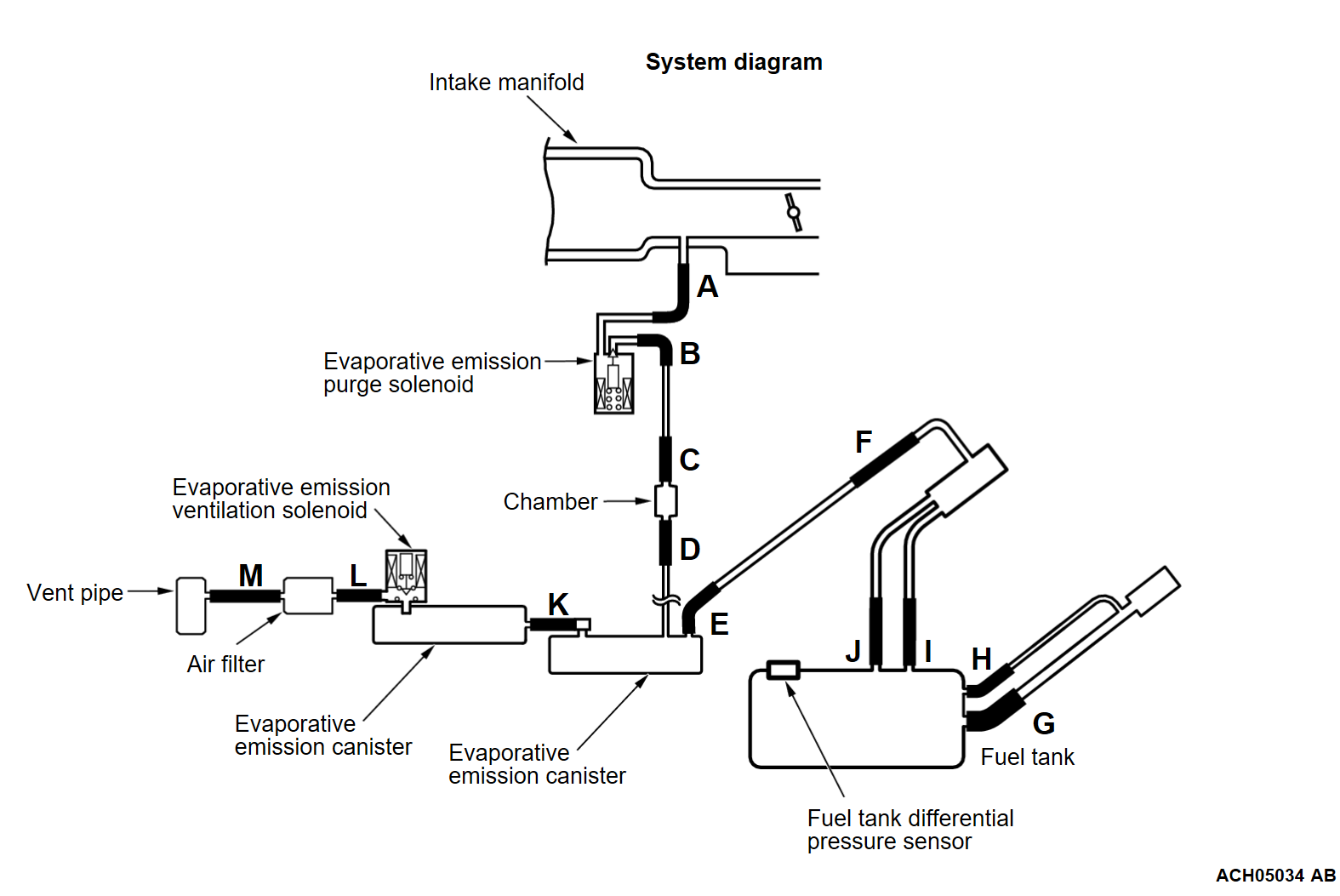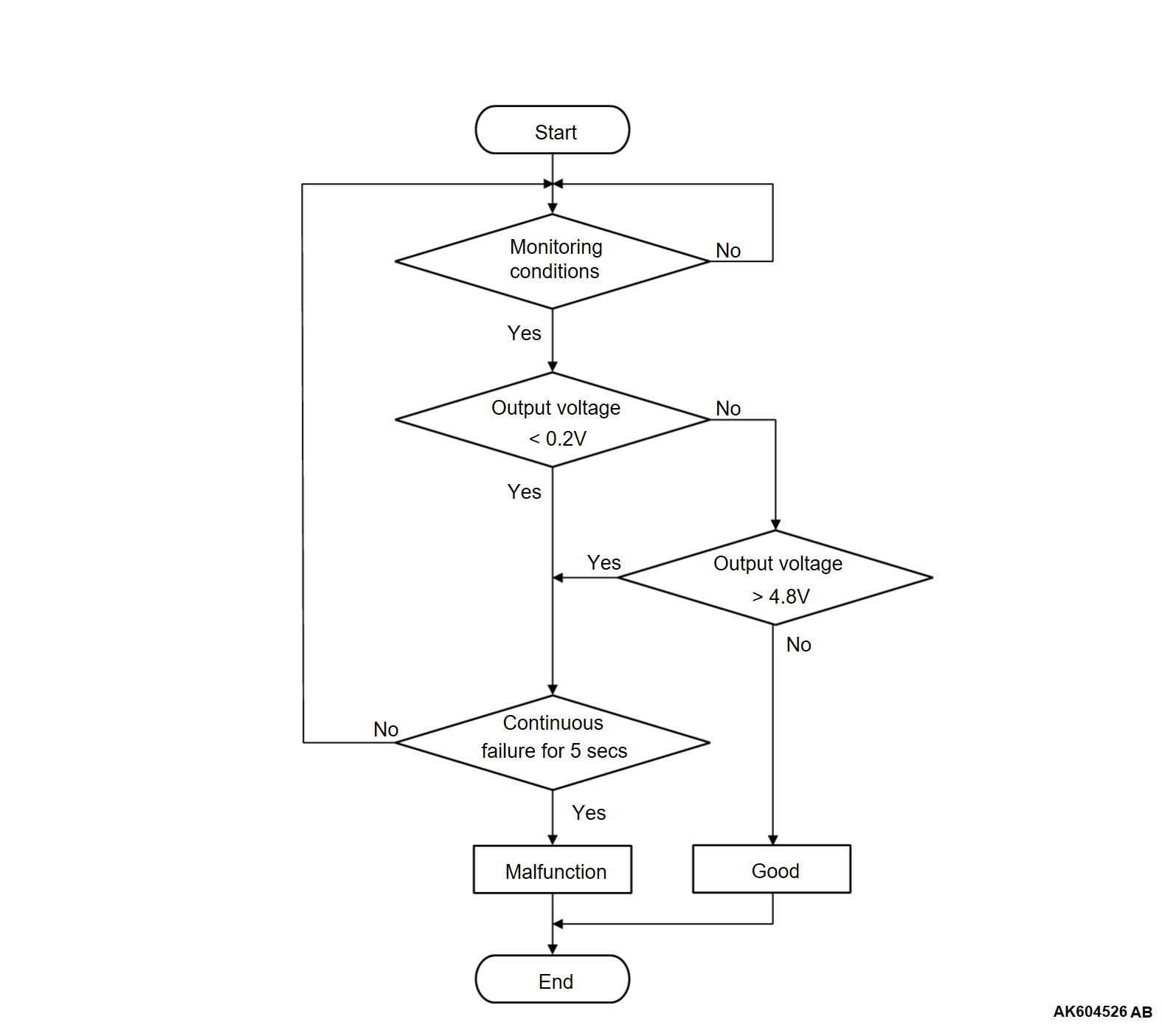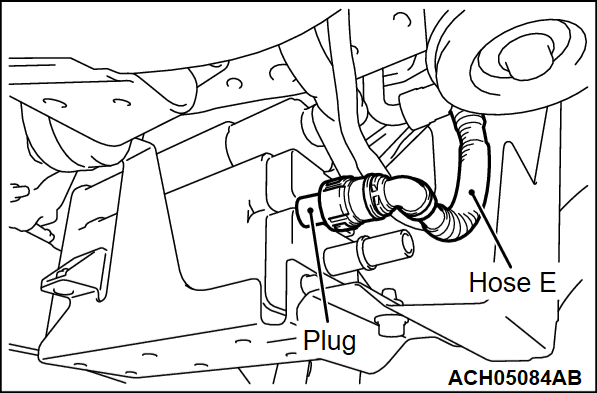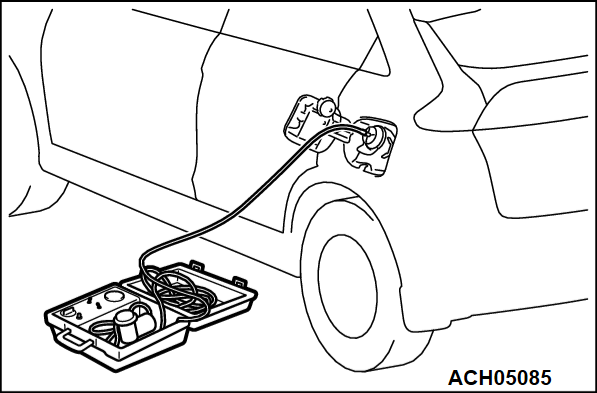DTC P0453: Evaporative Emission Control System Pressure Sensor High Input
CIRCUIT OPERATION
- The ECM terminal FPR5 supplies a 5 volts reference signal to the fuel tank differential pressure sensor. The fuel tank differential pressure sensor is grounded through the ECM terminal FPRE.
- The fuel tank differential pressure sensor returns a voltage signal to the ECM terminal F/PR that is proportional to the pressure in the fuel tank.
TECHNICAL DESCRIPTION
- To determine whether the fuel tank differential pressure sensor is defective, the ECM monitors the fuel tank differential pressure sensor output voltage.
- The ECM judges if the fuel tank differential pressure sensor output voltage is normal.
| note | In rare cases, this DTC may be also set under some fuel and driving conditions regardless of the fuel pressure sensor output voltage when the fuel system is clogged. |
DESCRIPTIONS OF MONITOR METHODS
Fuel tank differential pressure sensor output voltage is out of specified range.
MONITOR EXECUTION
- Continuous.
MONITOR EXECUTION CONDITIONS (Other monitor and Sensor)
Other Monitor (There is no temporary DTC set in memory for the item monitored below)
- Evaporative emission purge solenoid monitor
- Evaporative emission ventilation solenoid monitor
- Fuel tank temperature sensor monitor
- Fuel level sensor monitor
Sensor (The sensors below are determined to be normal)
- Mass airflow sensor
- Barometric pressure sensor
- Intake air temperature sensor 1
- Engine coolant temperature sensor
- Accelerator pedal position sensor
Check Conditions
- More than 2 seconds have passed since the engine starting sequence was completed.
- Remaining fuel level is 80 percent or less when the engine is started.
- The maximum barometric pressure subtracted from the current barometric pressure is less than 4 kPa (1.2 in.Hg)*.
- *: Activated only when the following two conditions have been met.
- Amount of remaining fuel is more than 65 percent of capacity when the engine is started.
- Item temperature is more than 36°C (97°F).
Judgment Criterion
- The fuel tank differential pressure sensor output voltage is more than 4.8 volts for 5 seconds.
FAIL-SAFE AND BACKUP FUNCTION
- None.
TROUBLESHOOTING HINTS (The most likely causes for this code to be set are: )
- Fuel tank differential pressure sensor failed.
- Open fuel tank differential pressure sensor circuit, or connector damage.
- ECM failed.
DIAGNOSIS
STEP 1. Using scan tool (M.U.T.-IIISE), check data list item 52: Fuel Tank Differential Pressure Sensor.
| caution | To prevent damage to scan tool (M.U.T.-IIISE), always turn the ignition switch to the "LOCK" (OFF) position before connecting or disconnecting scan tool (M.U.T.-IIISE). |
(2) Disconnect the hose E from the evaporative emission canister.
(3) Plug the disconnected end of hose E.
(4) Turn the ignition switch to the "ON" position.
(5) Remove the fuel cap.
(6) Set scan tool (M.U.T.-IIISE) to the data reading mode for item 52, Fuel Tank Differential Pressure Sensor.
- Output voltage should be between 1,500 to 3,500 millivolts.
(7) Connect the evaporative emission system pressure pump (Miller number 6872A) to the fuel tank filler tube by using fuel tank adapter (MLR-8382) and pressurize the fuel tank.
- The fuel tank pressure reading should increase.
(8) Turn the ignition switch to the "LOCK" (OFF) position.
(9) Remove the evaporative emission system pressure pump (Miller number 6872A) and the fuel tank adapter (MLR-8382), and reinstall the fuel cap.
(10) Connect hose E to the evaporative emission canister.
Is the sensor operating properly?
STEP 2. Check the continuity at fuel tank differential pressure sensor harness side connector.
(1) Disconnect the fuel tank differential pressure sensor connector and measure at the harness side.
(2) Check for the continuity between terminal FPRE line and ground.
- Continuity (2 ohms or less).
Does continuity exist?
STEP 3. Check of open circuit in FPRE line between fuel tank differential pressure sensor connector and ECM connector.
STEP 4. Using scan tool (M.U.T.-IIISE), check data list item 52: Fuel Tank Differential Pressure Sensor.
(1) Disconnect hose E from the evaporative emission canister.
(2) Plug the disconnected end of hose E.
(3) Turn the ignition switch to the "ON" position.
(4) Remove the fuel cap.
(5) Set scan tool (M.U.T.-IIISE) to the data reading mode for item 52, Fuel Tank Differential Pressure Sensor.
- Output voltage should be between 1,500 to 3,500 millivolts.
(6) Connect the evaporative emission system pressure pump (Miller number 6872A) to the fuel tank filler tube by using fuel tank adapter (MLR-8382) and pressurize the fuel tank.
- The fuel tank pressure reading should increase.
(7) Turn the ignition switch to the "LOCK" (OFF) position.
(8) Remove the evaporative emission system pressure pump (Miller number 6872A) and the fuel tank adapter (MLR-8382), and reinstall the fuel cap.
(9) Connect hose E to the evaporative emission canister.
Is the sensor operating properly?
![[Previous]](../../../buttons/fprev.png)
![[Next]](../../../buttons/fnext.png)






